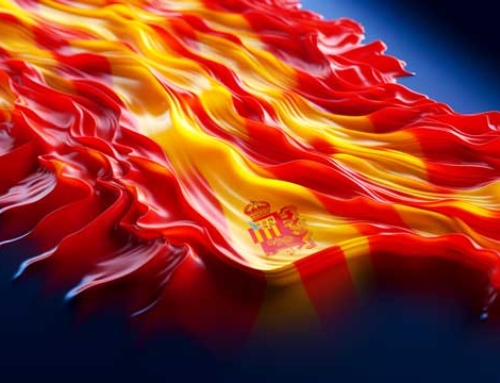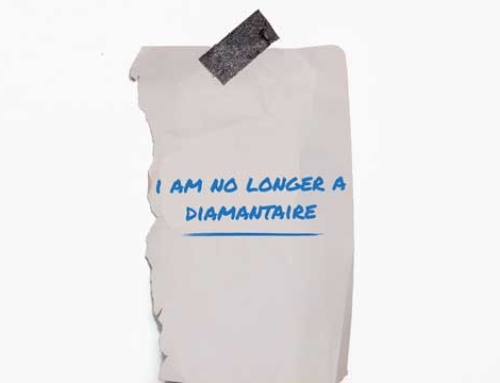Every fourth diamond in the world comes from Russia, which is subject to many sanctions. Nevertheless, Europe and the USA cannot and will not keep their hands off the glittering stones – Ukraine war or not.Gloved jewels are draped on velvet in the window of a store in Antwerp’s diamond district. The Belgian port city has been considered one of the hubs for the business with precious stones since the 15th century. Discreetly and confidentially, 37 billion euros are turned over here annually, according to the Antwerp World Diamond Centre. When asked where the diamonds come from, one jeweler replies with a laugh, “I’d rather not ask.” His reticence is not entirely unfounded.
The rough diamonds come from Angola, Congo, Sierra Leone, South Africa and also Russia, as Sigal Vantzovski, owner of Binson Diamonds in Antwerp, explains. They are brought to Belgium to be polished in manufactories. The diamonds are then processed into jewelry and sold in her store, among other places.
It is a noble niche market with billions in sales, from which not least Russia – despite the war in Ukraine – continues to profit. Since the beginning of the Russian war of aggression in Ukraine, the European Union has imposed numerous sanctions against Moscow. For example, the import of certain goods such as gold, vodka and caviar was banned – Russian diamonds were spared, and for a specific reason.
Belgium boycotted end of Russian diamond trade
According to data from the Russian Ministry of Finance, Russia exported more than 48.6 million carats of rough diamonds abroad in 2021 – the highest volume since the beginning of the observation period in 2007. The monetary turnover was not quantified. The main export destinations: The United Arab Emirates and Belgium.
Belgium – the country where the EU has its headquarters – thus plays a key role in the diamond industry and lobbied in the sanctions negotiations for Russian stones to remain excluded from the measures.
From an economic point of view, Europe would harm itself with sanctions, says Koen Vandenbempt, dean of the Faculty of Economics at the University of Antwerp. By stopping imports of Russian rough diamonds, an industry would be lost and relocate to Dubai or Mumbai – places where far less emphasis would be placed on transparency or sustainability than in Antwerp, Vandenbempt says.
Since many countries such as India, Israel or the United Arab Emirates would not have joined a boycott, the Russian stones would ultimately find their way into the world market through it, explains Joachim Dünkelmann of the Bundesverband der Juweliere, Schmuck-und Uhrenfachgeschäfte (BJV – German Federal Association of Jewelers, Jewelry and Watch Specialists). “Tightening regulations or laws against Russia would have no effect on this.”
Russian diamond giant accounts for over a quarter of global diamond production
However, the Kremlin is most likely profiting from the diamond rush. One of the largest producers is the Russian diamond giant Alrosa, which by its own account “partially” belongs to the state. Experts estimate the state’s stake at about 33 percent.
Alrosa accounts for 95 percent of Russian diamond production – about 27 percent worldwide. That means at least one in four stones on markets worldwide comes from Russia. The giant operates several mines in the Sakha region in northeastern Russia and in Arkhangelsk in the northwest, and also has stakes in mines abroad – in Angola, for example.
In contrast to Vandenbempt, commodities expert Larisa Stanciu stresses that a ban on imports of Russian rough diamonds would result in less money flowing into the state coffers via Alrosa. “This would have both a direct and indirect impact on the budget to support the war, although revenues from the diamond trade are much lower than revenues from gas and oil trade.”
USA also maintains diamond trade with Russia
Alrosa CEO Sergei Ivanov is no stranger either. He was among the first oligarchs from Putin’s circles to be sanctioned by the United States. While the European Union hesitated, the U.S. government imposed sanctions on Alrosa shortly after the outbreak of war and subsequently tightened them.
“That’s where I always get a little cynical,” Vandenbempt says, noting critically that Europeans are naive to think Americans would do anything to hurt their own economy. Jewelry sales in the States account for 50 percent of the world market, according to him. So there’s also a loophole in the U.S. sanctions provision thanks to a formulation that’s not entirely flawless. It says that if a diamond has been significantly altered in another country, it may claim that region as its origin.
Consequently, Russian gems polished in India, for example, could still be imported to America and disguise their origin. It is technically nearly impossible to determine a stone’s country of origin anyway, expert Vandenbempt says. However, there are certification procedures for rough diamonds, such as the so-called Kimberley Process, which, according to customs, is intended to prevent the import of so-called conflict and blood diamonds into the EU.
In Germany, the industry has a very high interest in not sourcing goods from Russia, according to BVJ managing director Dünkelmann. “This also and especially includes diamonds.” Since spring, he said, many suppliers have given assurances that their stones do not come from Russia. “Neither the trade nor consumers want goods from Russia, and we are doing everything possible to ensure this.“







